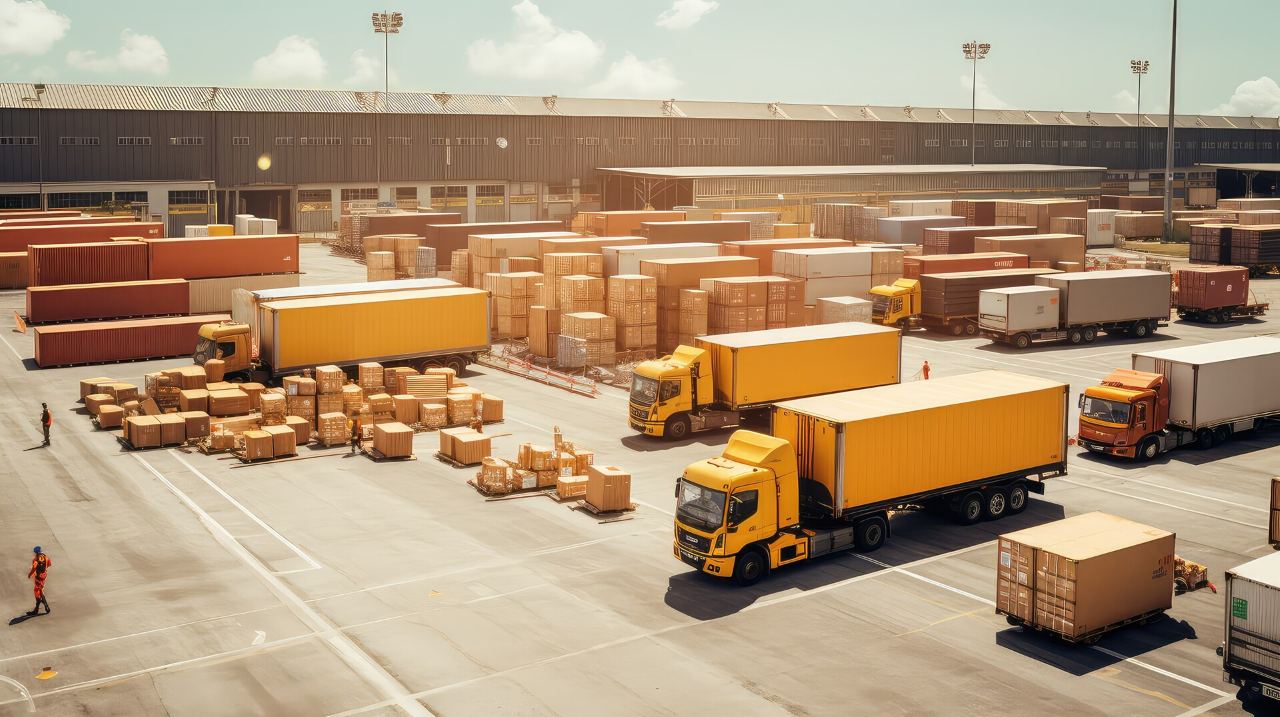Outbound Logistics: What You Need To Know

12/02/2025
When you order something online, a complex chain of events kicks into motion behind the scenes. Products don't magically appear at your doorstep – they travel through a carefully orchestrated system that many businesses struggle to get right.
That system is outbound logistics, and it's often the unsung hero (or villain) of customer experience. Some companies nail it, delivering exactly what you ordered, when they promised, in perfect condition. Others leave you wondering if your package is lost in some mysterious warehouse void.
The difference isn't just luck. Companies that master outbound logistics gain loyal customers, reduce unnecessary costs, and stay ahead of competitors. Let's pull back the curtain on what makes effective outbound logistics work and why it matters for your business.
What is Outbound Logistics?
Outbound logistics covers everything that happens from the moment a customer places an order until they receive their purchase (and sometimes beyond). It's the nuts and bolts of getting products out of your warehouse and into customers' hands efficiently.
While it might sound like just another business buzzword, outbound logistics directly affects customer satisfaction, operational costs, and ultimately, your company's reputation. When done right, customers get what they ordered, when they expect it, in perfect condition – making them more likely to buy from you again.
Key Components of Outbound Logistics
Order fulfillment transforms customer orders into actionable tasks, including picking items from shelves and preparing them for shipment.
Packaging ensures products are properly protected during transit while balancing cost, sustainability, and customer experience considerations.
Distribution network design determines which facilities handle which orders and how products flow through your system to reach customers.
Transportation management selects carriers, routes, and shipping methods to balance speed, reliability, and cost considerations.
Delivery tracking provides visibility to both your team and customers, setting clear expectations and allowing for proactive issue resolution.
Customer communication keeps buyers informed about their order status, shipping updates, and any potential delays or issues.
Outbound Logistics Process: Step-by-Step
Let's break down exactly how products move from your warehouse to your customers' doorsteps.
Step 1: Receiving and Processing Customer Orders
The journey begins when a customer clicks "buy." Your order management system verifies payment, checks inventory availability, and routes the order to the appropriate fulfillment centre. Speed matters here – customers increasingly expect almost instantaneous order processing.
Modern systems can automatically prioritise orders based on shipping promises, customer importance, or warehouse workload. This smart allocation helps maintain service levels even during peak periods.
Step 2: Packing and Labelling Products
Once picked, items need proper packaging that's both protective and cost-effective. This stage includes selecting appropriate box sizes, adding protective materials, and including any promotional inserts or paperwork.
Accurate labelling is equally important. Each package needs shipping details, tracking information, and often special handling instructions. Mistakes here can lead to delivery failures or returns.
Step 3: Choosing the Best Shipping Method
Selecting the right shipping option involves balancing speed, cost, reliability, and distance. A sophisticated outbound logistics strategy might use different carriers for different regions or product types.
For example, you might use premium express shipping for high-value items while sending bulkier, less urgent orders through more economical methods. And working with the best 3PL company in the UK (yes, us!) gives you access to negotiated shipping rates that might not be available otherwise.
Step 4: Managing Last-Mile Delivery
The final stretch of delivery – from transportation hub to customer doorstep – often presents the greatest challenges. Last-mile delivery accounts for roughly 53% of total shipping costs and faces unique obstacles like traffic congestion, access restrictions, and the need for multiple delivery attempts.
Innovative solutions like collection points, smart lockers, and precise delivery scheduling help overcome these hurdles while improving customer convenience.
Step 5: Handling Returns and Reverse Logistics
The outbound process doesn't necessarily end when customers receive their orders. An effective returns process is critical, especially in sectors like fashion where return rates can reach 40%.
Streamlining returns requires clear policies, easy-to-use return labels, and efficient processing to properly inspect, refurbish, restock, or dispose of returned items.
Challenges in Outbound Logistics

Even well-designed systems face obstacles. Here are the most common issues plaguing outbound logistics operations today.
Rising Transportation Costs
Shipping expenses continue climbing due to fuel price volatility, driver shortages, and increased demand for fast delivery. These cost pressures squeeze margins and force difficult decisions about pricing strategies and service offerings.
Smart companies counter this trend by consolidating shipments, optimising delivery routes, and rethinking packaging to reduce dimensional weight charges.
Managing Delivery Delays
Weather events, traffic disruptions, carrier issues, and seasonal volume spikes can all cause delivery delays. The key isn't eliminating delays entirely (which is impossible) but managing them effectively.
Proactive communication about potential delays, real-time tracking updates, and building realistic buffers into promised delivery dates help maintain customer satisfaction even when things don't go perfectly.
Handling Returns Efficiently
The growth of e-commerce has brought an explosion in returns. Processing these returns quickly, determining product condition, and deciding whether items can be resold creates significant operational challenges.
Without streamlined reverse logistics processes, returned inventory can quickly pile up, tying up capital and warehouse space while creating administrative headaches.
Best Practices for Optimising Outbound Logistics
Want to improve your outbound logistics performance? These strategies can help.
Leveraging Technology for Order Tracking
End-to-end visibility transforms outbound logistics management. Modern tracking systems provide real-time updates at every stage of the fulfillment and delivery process, allowing both your team and customers to monitor progress.
This transparency doesn't just satisfy customer curiosity – it enables proactive problem-solving. When you can see a potential delay developing, you can communicate with customers before frustration sets in.
Partnering with Reliable Logistics Providers
Few companies excel at every aspect of outbound logistics. Strategic partnerships with specialists often provide better results at lower costs than handling everything in-house.
The right logistics partners bring expertise, technology, carrier relationships, and economies of scale that would be difficult to replicate internally. They can also provide flexibility to handle seasonal fluctuations without requiring permanent infrastructure investment.
Using Data Analytics for Better Decision-Making
The outbound logistics process generates enormous amounts of data. Transforming this data into actionable insights helps optimise everything from warehouse layouts to delivery routes.
Analytics can reveal patterns in order profiles, predict seasonal demand shifts, identify delivery bottlenecks, and highlight opportunities for efficiency improvements. Companies that make data-driven decisions consistently outperform those relying on intuition or tradition.
Final Thoughts
Let's be honest—most customers don't care about outbound logistics until something goes wrong. They don't celebrate when their package arrives on time; they just expect it. But miss that delivery window, and suddenly logistics becomes the main character in their customer experience story.
That's the paradox of outbound logistics: excellence goes unnoticed while failures get remembered (and often shared on social media). Yet this behind-the-scenes work directly influences customer retention, operational expenses, and marketplace reputation.
 Who We Are
Who We Are
 Accreditations
Accreditations
 What We Do
What We Do
 IT Solutions
IT Solutions
 Our Warehouses
Our Warehouses
 Contact Us
Contact Us
 Our Partners
Our Partners
 E-commerce
E-commerce
 Start up
Start up
 Alcohol and Drinks
Alcohol and Drinks
 Health & Beauty
Health & Beauty
 Electronics
Electronics
 Amazon Order Fulfilment
Amazon Order Fulfilment
 International Road/Air/Sea
International Road/Air/Sea
 Parcel Deliveries
Parcel Deliveries
 Outsourced Warehousing
Outsourced Warehousing
 Van and Pallet Deliveries
Van and Pallet Deliveries
 Get a Quote
Get a Quote